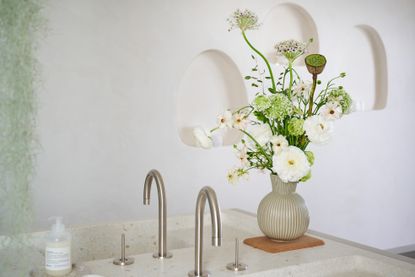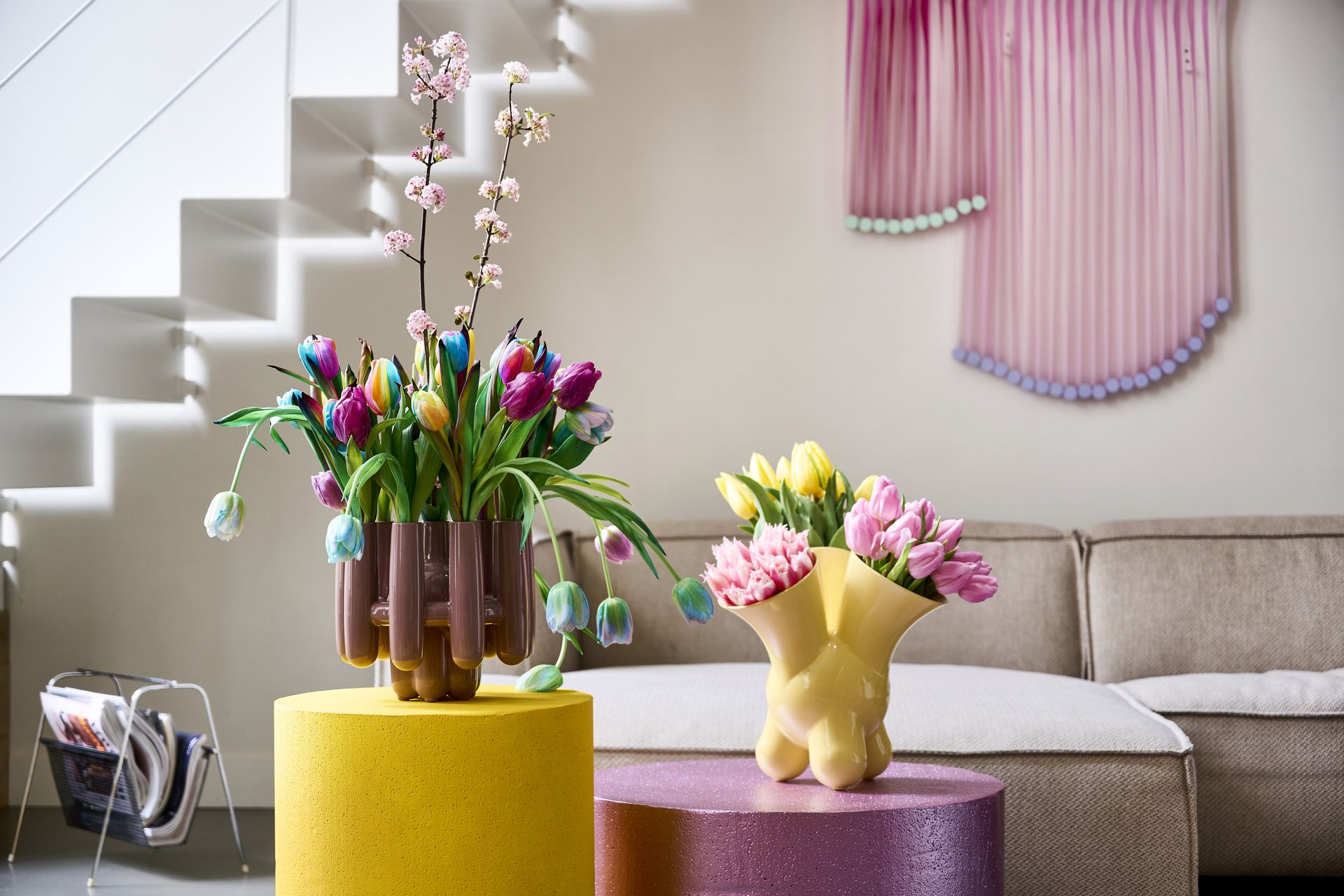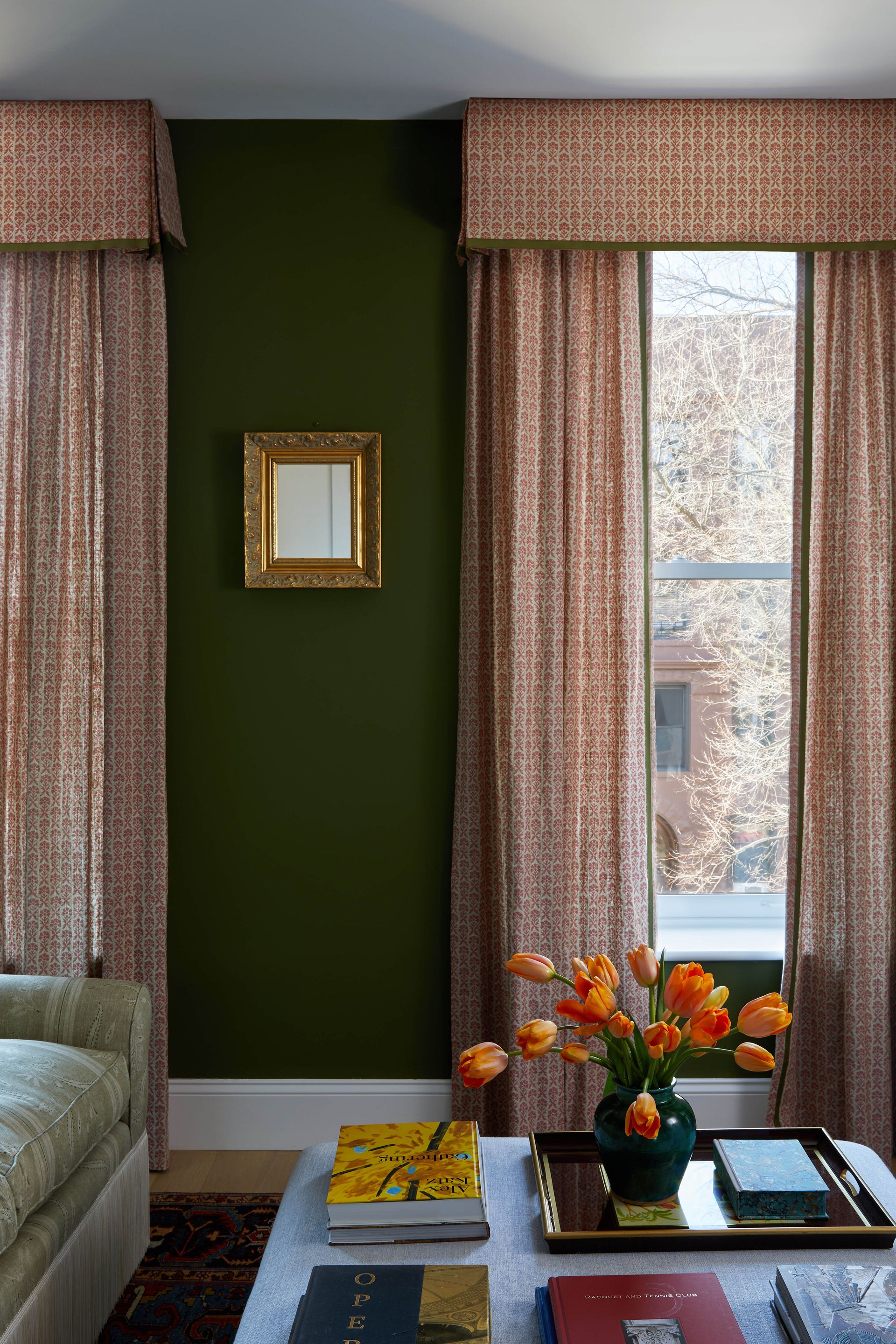Will putting sugar in a vase make my flowers last longer? We asked florists for their insights into this viral hack
This staple ingredient could be the secret to longer-lasting flowers


Having a home filled with beautiful flowers is one of life's small pleasures. Their presence adds a subtle elegance to any space, so much so that you wish they would live forever. Unfortunately, though, they begin to wilt and droop much quicker than we'd hope.
We've heard many old wives' tricks that promise longest-lasting flowers, from placing your flowers in a vase of vodka to adding a penny to your water, but now we've found another nifty trick out there that claims to extend the life of your gorgeous blooms, and all it involves is a spoonful of sugar. Discerning myth from fact can be difficult, which is why we approached this viral hack with caution. We asked florists for their take on the trend, and it turns out it could actually be worth its salt (or should we say 'sugar').
How does the sugar hack for flowers work?

This sugar trick could not be simpler. This clever trick for keeping cut flowers looking fresh simply involves adding a tablespoon of sugar to the water in your vase. There is one key guideline to follow in order to maximize efficiency, however. 'To make this work for your floral arrangements, add a teaspoon of sugar to the vase water, but remember to cut your stems at an angle to increase absorption,' says experienced florist, David Cohen.
Does adding sugar to water actually extend the life of your flowers?

After trying many non-successful tricks for cut flowers over the years, it's quite natural to be skeptical, but while you might think it totally random to add sugar to your flower water, there's some very rational science behind it. In fact, florists suggest it could be the key to long-lasting flowers.
'This age-old trick does actually work to extend the life of your flower,' says David. 'Sugar acts as a nourishment source for cut flowers, providing them with energy to maintain their vibrant appearance.'
Basically, see it as food or fertilizer for your flowers. The process of feeding cut flowers with sugar essentially keeps their cells nourished for a longer period, thereby extending their freshness and lifespan. This then encourages blossoms to open and remain hydrated. It's a genius way to keep your fall flower trends vibrant and happy for longer.
Are there any risks with the sugar hack?

Adding sugar to your vase is a great way to provide supplementary nutrients to your bloom, but it isn't without its issues. 'This method can work in keeping cut flowers perky, but it can also contribute to bacterial growth,' says floral expert, Catherine Dorant. 'Bacteria is one of the main causes of premature decay in cut flowers, and therefore we need to be cautious of not contributing to the decay of our flowers indirectly.'
Fortunately, there are ways to discourage bacteria build-up. 'Adding an antibacterial agent is recommended when adding sugar to your vase,' advises Juan Palacio, an experienced florist from Bloomsybox. This could be a dash of lemon juice, a teaspoon of vinegar, or a nip of vodka, but use sparingly. 'These substances should be used with caution,' says Juan, 'too much can potentially harm the flowers'.
What other tricks are their for longer-lasting flowers?
Adding sugar to your water is just one of the tricks recommended by the experts to extend the life of your bouquets. You could also try putting copper in a vase or even adding a splash of bleach to your water. If you're serious about getting more life out of your flowers, though, there's some more general maintenance you'll need to know about.
'Changing the water of your flowers every other day is vital if you want them to be long-lasting,' says David. This water should also be room temperature, too cold and your flowers will struggle to absorb it, too hot and it can damage the stems.
The location of your vase also matters. Keep your flowers away from direct sunlight and drafty areas as this can have an impact on their life cycle. To keep them looking fresh, trim and prune any dying leaves and petals. 'Removing any flowers that have wilted will also keep bacterial growth and decay at bay,' says Catherine. 'Wilted flowers release ethylene gas which triggers decay in the other surrounding stems, contributing to quicker deterioration of the overall arrangement.'
By following all of these tips and adding sugar to your water you can expect a significantly extended lifespan from your floral arrangements, meaning more time to enjoy them in all their glory!
@annatheflorist ♬ Steven Universe - L.Dre

Size: 4lb
Price: $3.39

Quantity: 2-pack
Price: $30.32

Size: 75"L X 6"H X 1.75"W
Price: $12.99
Be The First To Know
The Livingetc newsletter is your shortcut to the now and the next in home design. Subscribe today to receive a stunning free 200-page book of the best homes from around the world.

Amy recently completed an MA in Magazine Journalism at City, University of London, with experience writing for Women’s lifestyle publications across arts, culture, and beauty. She has a particular love for the minimalist aesthetic mixed with mid-century furniture, especially combining unique vintage finds with more modern pieces. Her previous work in luxury jewellery has given her a keen eye for beautiful things and clever design, that plays into her love of interiors. As a result, Amy will often be heard justifying homeware purchases as 'an investment', wise words to live by.
-
 These 12 Best Table Lamps for Your Desk — Perfect Glows for a Creative Home Office
These 12 Best Table Lamps for Your Desk — Perfect Glows for a Creative Home OfficeThe best table lamps for your desk is have a soft, targeted glow. Elevate your WFH set-up with these stylish picks endorsed by Style Editor Brigid Kennedy
By Brigid Kennedy Published
-
 The Nespresso VertuoPlus is 30% Off for President's Day, and it's Kim Kardashian's Coffee Maker of Choice
The Nespresso VertuoPlus is 30% Off for President's Day, and it's Kim Kardashian's Coffee Maker of ChoiceThis sleek and stylish coffee maker was spotted in Kim's home bar, and you can currently save $60 if you buy yours from Amazon
By Lilith Hudson Published

